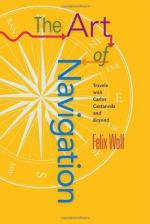|
This section contains 4,025 words (approx. 14 pages at 300 words per page) |

|
SOURCE: "Anthropology, Fiction, and the Occult: The Case of Carlos Castaneda," in Literature of the Occult: A Collection of Critical Essays, edited by Peter B. Messent, Prenlice-Hall, 1981, pp. 171-82.
[In the following essay, Murray, an American Studies Lecturer at Nottingham University in England, argues that through the structuring of his accounts, which blend realism and the supernatural, Castaneda creates occult fiction rather than anthropological nonfiction.]
Carlos Castaneda's work has already gained attention from many different quarters as a form of anthropology, but I want here, by looking at some of Castaneda's stylistic devices, and by relating his books to some other best-sellers of the same period, to suggest another way of approaching his work—namely, as a slowly unfolding occult fiction.
Castaneda's books were first treated—and often still are—as a contribution to the growing anthropological literature on the use of hallucinogens. His approach was seen as...
|
This section contains 4,025 words (approx. 14 pages at 300 words per page) |

|


